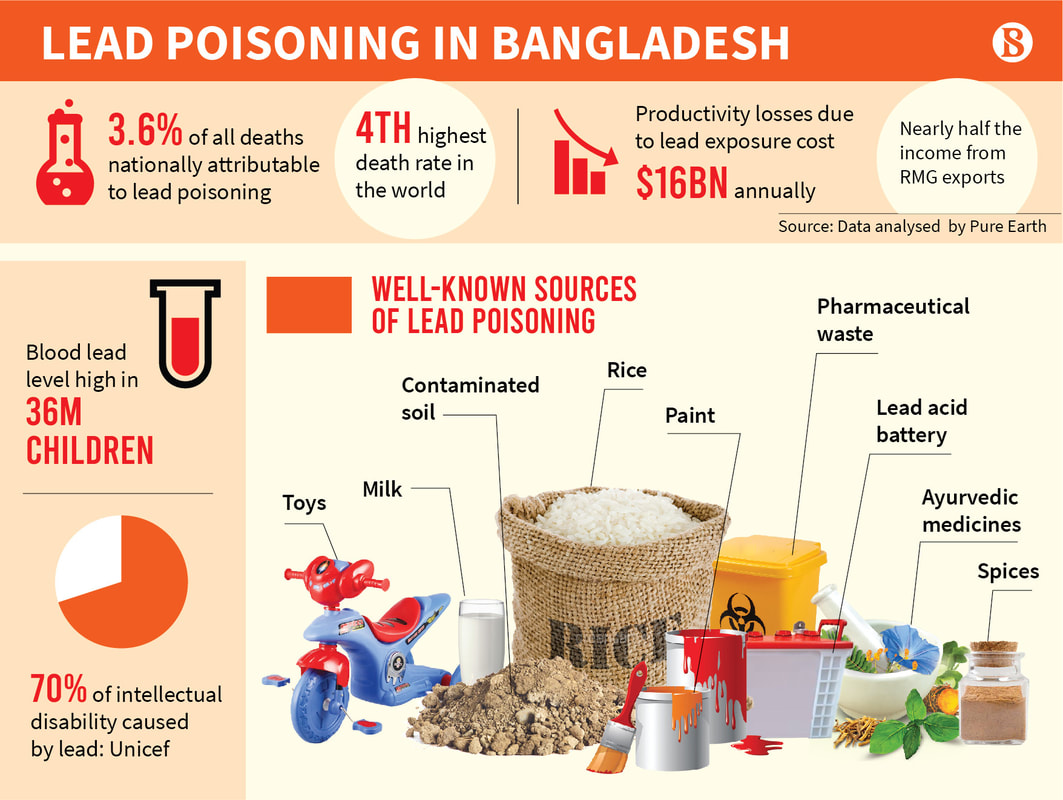25.04.2025
Bangladesh Lead Poisoning Epidemic
Bangladesh is witnessing a massive surge in cases of lead poisoning among children. 35 million kids are said to have high blood lead levels. According to the Institute of Health Metrics Evaluation, Bangladesh has the world’s fourth-highest rate of death due to lead exposure. How the battery boom is driving this lead poisoning epidemic. Lead poisoning is not a new phenomenon in Bangladesh, and the causes are manifold. They include the heavy metal's widespread and continued use in paint, in defiance of a government ban, and its use as an adulterant in turmeric spice powder to improve its colour and perceived quality. A great many cases are blamed on informal battery recycling factories that have proliferated around the country in response to rising demand. Children exposed to dangerous levels of lead risk decreased intelligence and cognitive performance, anaemia, stunted growth and lifelong neurological disorders. Informal battery recycling is a booming business in Bangladesh. It is driven largely by the mass electrification of rickshaws -- a formerly pedal-powered means of conveyance popular in both big cities and rural towns. Lead exposure has severe and long-lasting health and development effects on children, including lifelong learning disabilities and their capacity to earn an income when they grow up. UNICEF will be working with the concerned actors to help address dangerous metal waste and lead pollution and the toll it takes on children. In Bangladesh, illegal recycling of used lead-acid batteries in the open-air and close to homestead areas is considered to be a major source of lead exposure. Workers in dangerous and often illegal recycling operations break open battery cases, spill acid and lead dust in the soil, and smelt the recovered lead in crude, open-air furnaces that emit toxic fumes poisoning the surrounding community. Often, the workers and the exposed community are not aware that lead is potent neurotoxin.
Credit: AFP
Credit: AFP
Poverty deprives people of adequate education, health care and of life's most basic necessities- safe living conditions (including clean air and clean drinking water) and an adequate food supply. The developed (industrialized) countries today account for roughly 20 percent of the world's population but control about 80 percent of the world's wealth.
Poverty and pollution seem to operate in a vicious cycle that, so far, has been hard to break. Even in the developed nations, the gap between the rich and the poor is evident in their respective social and environmental conditions.
Poverty and pollution seem to operate in a vicious cycle that, so far, has been hard to break. Even in the developed nations, the gap between the rich and the poor is evident in their respective social and environmental conditions.













